
The Japanese visa is one of the easiest visas to secure for Filipinos. Ask a random Pinoy international traveler what their very first visa is and there’s a big chance it’s for Japan. Over the past decade, the Japanese Embassy has been very considerate, allowing more Filipinos to visit and explore their country.
The Japanese visa application is very straightforward. You complete their list of requirements, submit them through an accredited agency, and wait for the result. The agencies assess the documents one by one to make sure that everything is in order. But sometimes, there are things that applicants fail to notice, throwing a wrench into an otherwise smooth process.
Here are some of the common mistakes that Japanese visa applicants make.
1. Forgetting to sign the passport
Philippine passports must be signed to be valid. Older passports have your digital signature on the information page (Page 2). But the most recent version, the one with a 10-year validity, no longer has a digital signature.
You’ll be surprised by how many applicants don’t notice that there is a SIGNATURE LINE on Page 3 instead, just below the Philippine flag. And yes, it has to be signed.
You might be thinking it isn’t really that big of a deal because you can simply sign it. But it gets more complicated when you’re applying for someone who isn’t with you at the time. It happened to me once, when I applied in Manila for a family member who was in the province. I had to return and apply another time.
It’s also important to note that the passport must have at least 2 blank pages and at least 6 months validity.
2. Not using the right paper size (A4)
The Japanese visa application standard paper size is A4. All documents that you have control of the printing must be in A4 size. These documents include:
- Application form
- Daily schedule in Japan (itinerary)
- List of Visa Applicants (for group application)
- Invitation letter
- Guarantee letter
- Explanation letters
The agency may decline these documents if not in the right size.
3. Submitting birth certificates older than 1 year
The birth certificate must be issued by the PSA Main Office or Serbilis Outlet Center within the past one year. They don’t accept it when it’s older than that. They can see the date it was issued within the code at the bottom of the document.
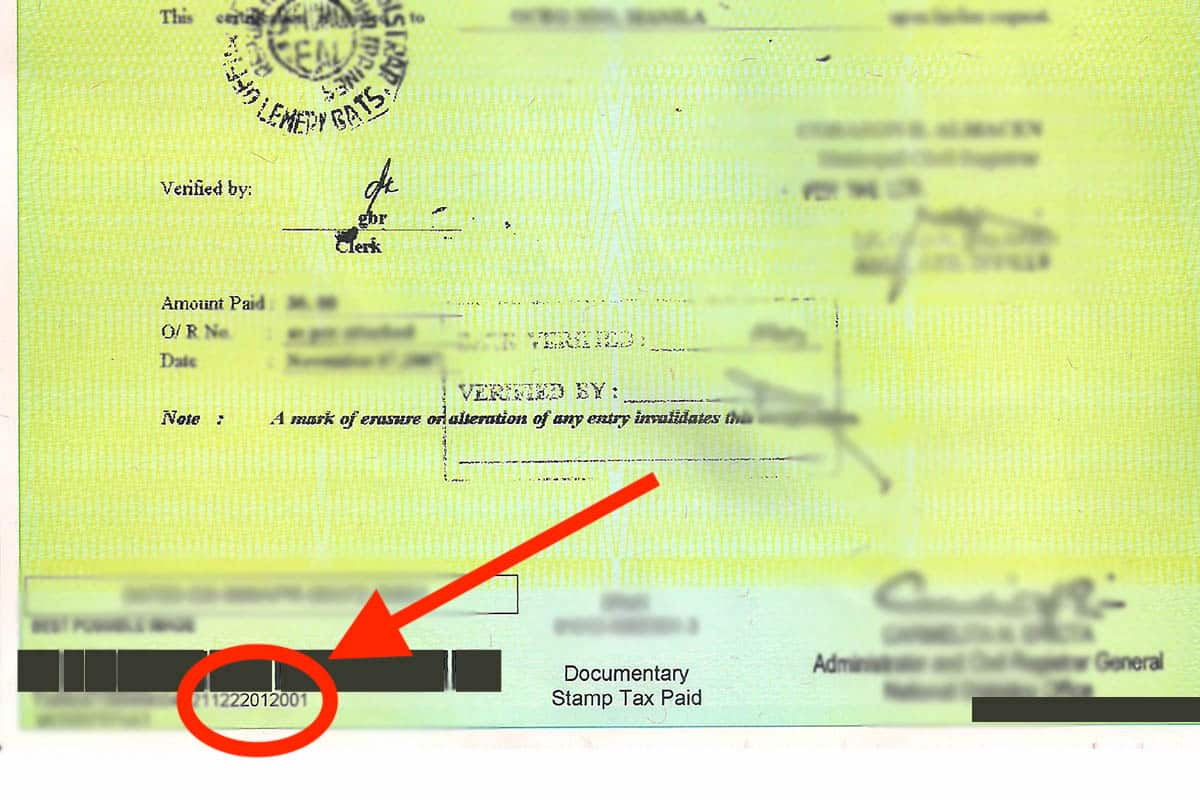
This is pretty common. Every time I apply at any agency, there’s always an applicant in the room who was asked to come back with a more recent copy of the birth certificate.
I don’t know why it has to be new, to be honest. But that’s the rule.
4. Failure to provide additional documents for late registration or no record
Another complication that many applicants overlook is the additional requirements when the birth certificate is marked “Late Registration”.
If you’re late-registered, submit a Baptismal Certificate and School Record (Form 137) from high school or elementary and School Yearbook (if applicable).
Moreover, if there is no record in PSA, submit a “Certificate of No Record” from PSA together with a birth certificate from the Local Civil registrar.
5. Applying too late
The Japanese Embassy processes applications fast. I have experienced getting my visa as early as two days after submission. That said, it doesn’t mean that you have to cut it too close to your travel date because in some unlucky cases, it can take much longer, sometimes weeks!
In addition, some agencies refuse to accept applications with travel dates that are shorter than a week away. For example, Reli Tours at SM Megamall has a 7-working-days policy. If the flight is scheduled sooner than 7 working days at the time of submission, they will NOT accept your application. It happened to a relative whom I accompanied at the agency. They turned us away and asked that we apply at another agency instead.
I’m not sure if other travel agencies have the same policy. Call them first if your trip is urgent.
6. Applying as a tourist but staying with a relative
We get a lot of inquiries about this. Tourist visa processing is way cheaper and way less complicated than a Visit visa, so it’s always tempting to go the former route. However, don’t apply for a tourist visa just because it’s convenient!
If you’re staying with a friend or relative in Japan, apply for a Visit Visa. It doesn’t make any sense to aim for a tourist visa when your documents clearly show you’re visiting and staying with someone there.
If you’re applying for a Tourist Visa, the logical Japanese address to write on the application form is that of a hotel, hostel, or another commercial accommodation.
7. Ignoring the “List of Visa Applicants” form when applying as a group
If you’re applying with a group or family, you need to accomplish and submit a form called “List of Visa Applicants.”
Bear in mind the following:
- You must have a REPRESENTATIVE APPLICANT, who will be the key person in your application. For example, if you’re applying as a family, one of the parents can be the representative. If one of the applicants/travelers will be sponsoring the rest of the group, that person can also be the representative.
- In the “relationship with the inviting person and guarantor” field, write N/A if you’re applying as a tourist. Fill this in only if you’re visiting friends or relatives in Japan.
- Must be printed on an A4-size paper. No other size is accepted.
You can download the form here.
No need to submit this if you’re applying alone.
8. Applying for a multiple entry visa when ineligible
If it’s your first time applying for a Japan visa, it’s best to aim for a single entry visa unless it’s justified or you’re eligible. If any of these apply to you, go for it:
- If you have travelled to Japan as temporary visitor within the last three years AND have sufficient financial capability to support their trip.
- If you have travelled to Japan as temporary visitor within the last three years AND have travelled as temporary visitor to G7 countries (excluding Japan) several times within the last three years. The other G7 countries are: Canada, France, Germany, Italy, the United Kingdom (UK) and the United States (USA).
- If you have high financial capacity (but has not been to Japan in the past 3 years). The keywords here are HIGH FINANCIAL CAPACITY.
- If you are an immediate family member (Spouse/Child) of a person who has high financial capacity.
If you’re none of the above, apply for a single entry visa in the meantime. Otherwise, you might be risking your application.
Anyway, sometimes they grant multiple entry visas to applicants who didn’t even request for it. (I know this because it happened to me.)
9. Not having enough funds to support your trip
The Embassy doesn’t explicitly say how much money you should have in the bank. The amount isn’t the only factor. It’s probably on a case-by-case basis.
- I have applied for a 15-day stay with only P100,000+ in the bank and my application got approved.
- A friend of mine applied for a 5-day stay with only P50,000 and got approved. She has a full-time job.
- Another friend applied for a 5-day stay with over P200,000 and got denied. She doesn’t have a regular job.
The rule of thumb is: your funds should be proportional to the length of stay. For example, if you have only P50,000, don’t apply for a 30-day stay because that would obviously raise a lot of questions regarding whether or not you can afford the trip.
10. Inconsistent application form and documents
Make sure that the information you write on the application form matches the supporting documents you submit. For example, if on the form you state you plan to stay in Japan for 5 days, don’t submit a 15-day itinerary. If you write on the form that you work for a certain company, your ITR should match.
If something doesn’t match, prepare an Explanation Letter. This happened to me before. At the time, I had just recently moved to another company so my ITR was from my previous employer. I had to write on the spot an explanation why employer on the form is not the same on my ITR.
11. Forgetting the seal or signature on the Guarantee/Invitation Letter
What I like about Japan visa application is that they have standard forms for everything, including Invitation and Guarantee letters. You don’t need to guess the information you need to include because they are indicated on the form.
The problem with this is that there are certain items that are easy to overlook because of their placement. One of them is the SEAL.
Japan residents have a seal that they use on official documents. If your inviter or guarantor is a Japanese national or resident, have these documents stamped by them. If your inviter or guarantor is a foreign national who does not have a seal, they must put their signature in the same area.
12. Leaving non-applicable fields blank
If the question doesn’t apply to you, write N/A.
This is quite confusing because Japan and Korea have different policies, and most designated agencies process both Japan and Korean visas.
But here’s the generally accepted practice: For Japan Visa form, write N/A.
Related Japan Visa Posts
- Japan Visa Requirements for TOURISTS
- Japan Visa Requirements for VISITING RELATIVES OR FRIENDS
- How to Get a Multiple Entry Japan Visa
- How to Fill Out Japan Application Form
- Common Reasons why Visa Applications are DENIED!
- FIRST TIME ABROAD: Immigration Tips
- How to Avoid Getting OFFLOADED: Immigration Requirements & Tips
2020 • 2 • 25
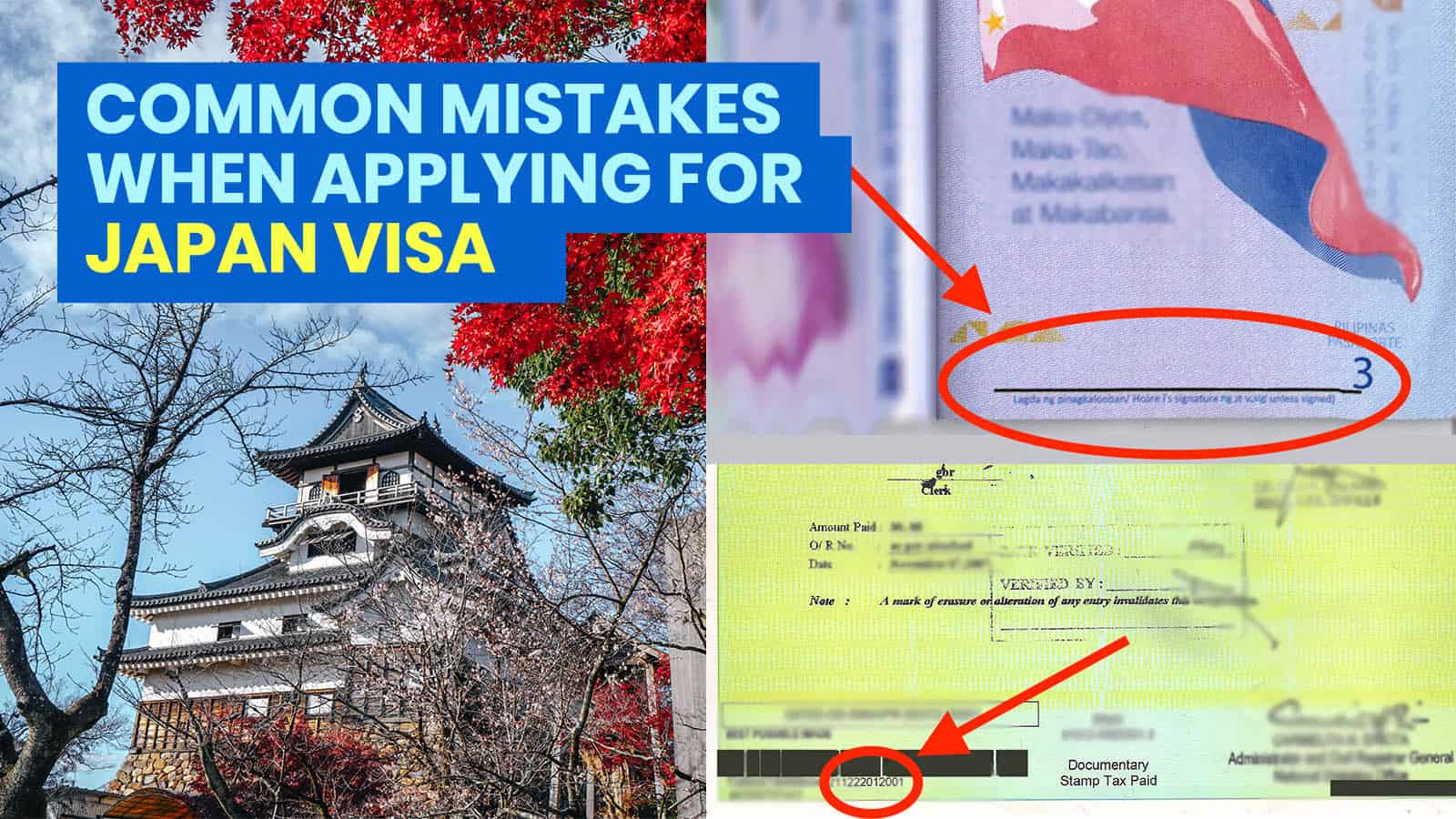
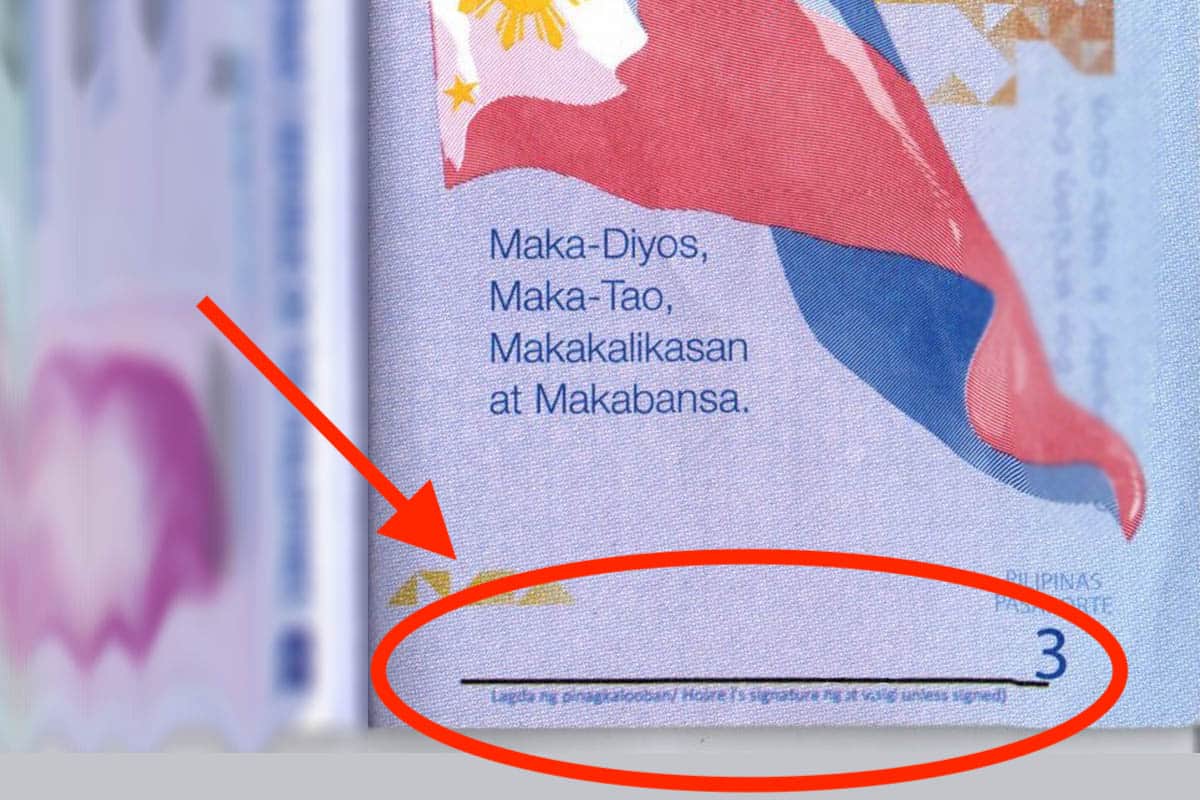

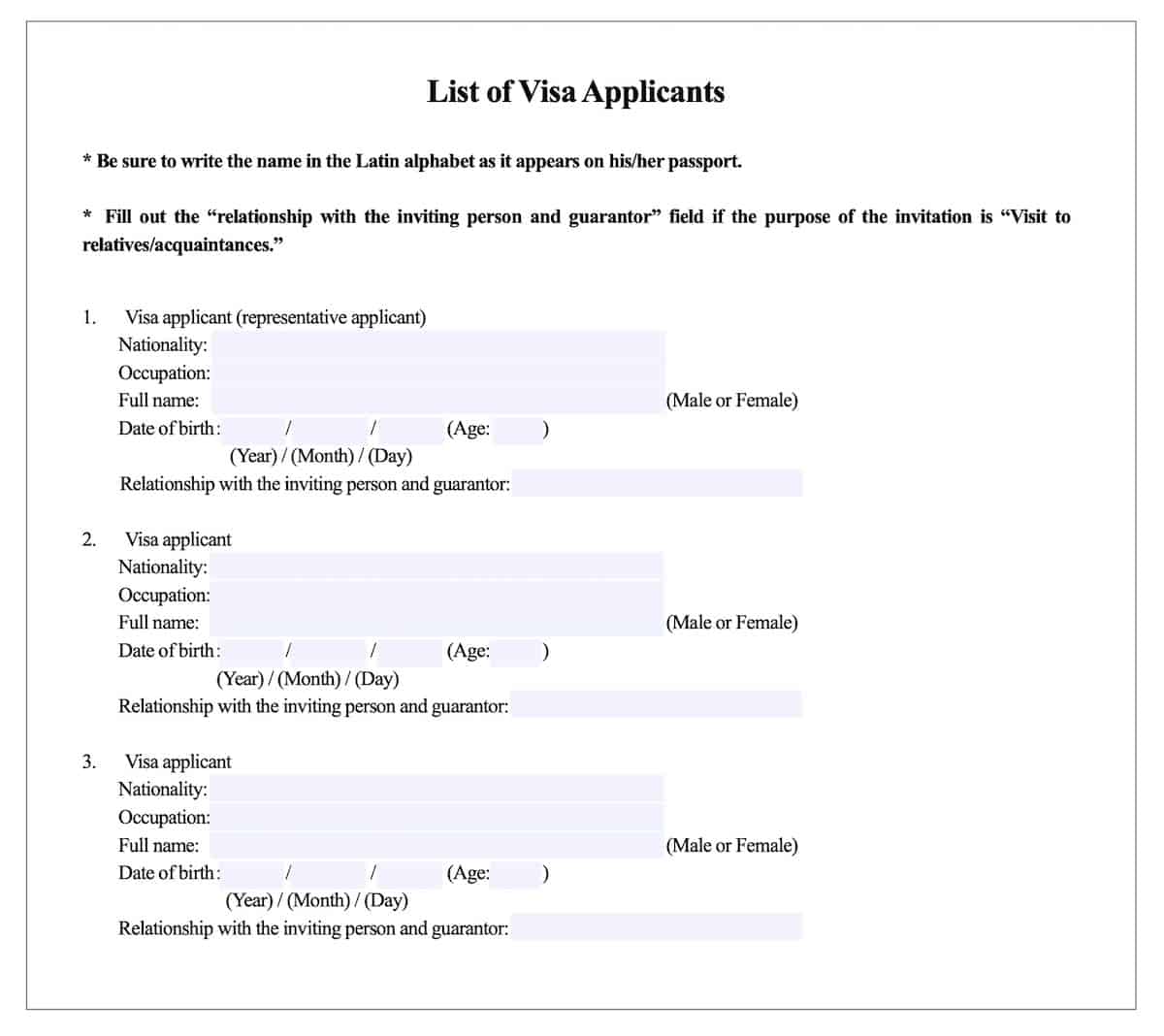
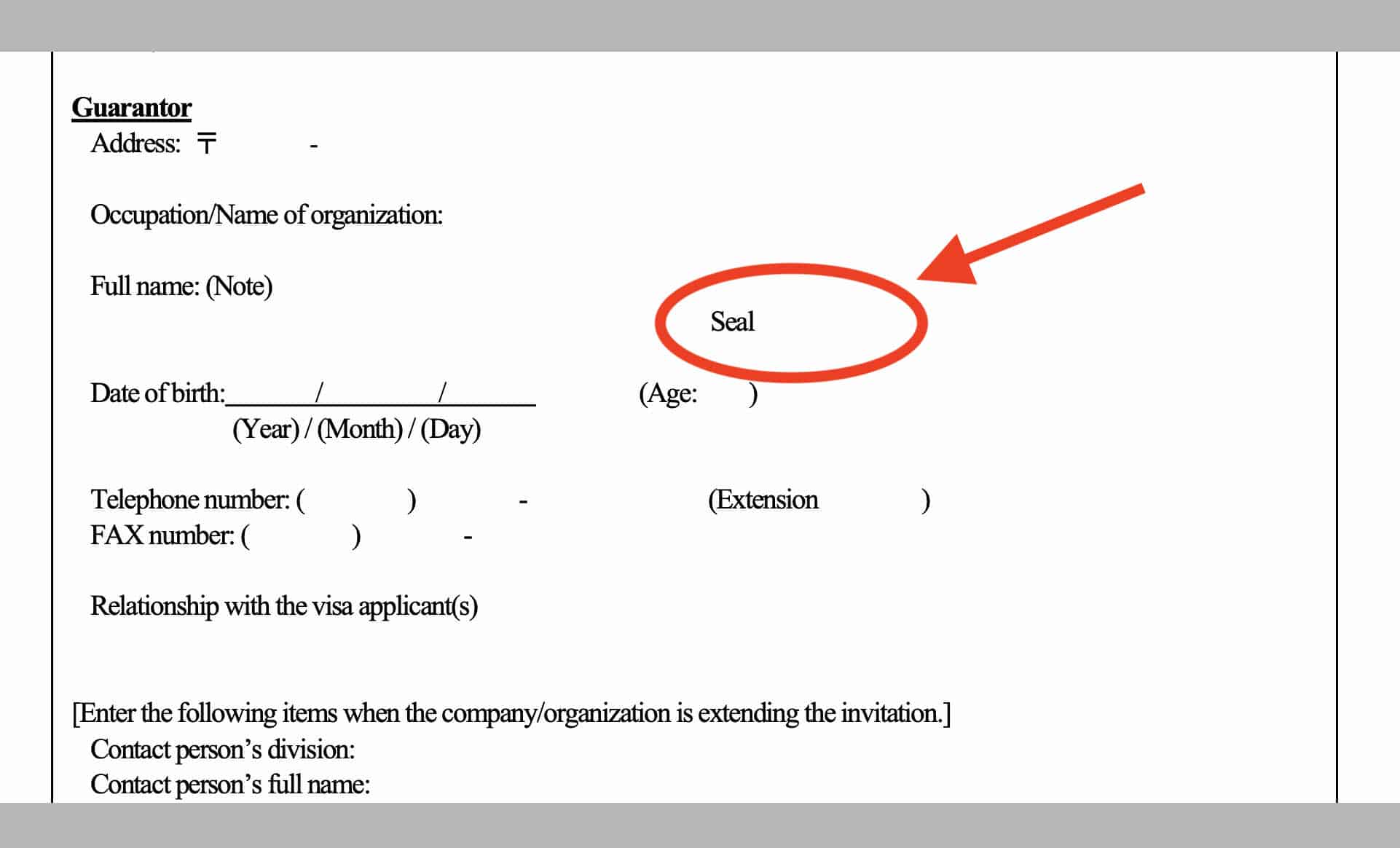





















So if I am applying with my Wife for Tourist Visa for Japan then Me and My wife Needs to fill two separate application form and My Wife need to fill this “List Of Visa Applicants” where my name would be in reprensentative section.
Should my wife need to mention in relationship with Gurantor section as a “Husband” or it would be “N/A” only in Tourist Visa app?
She needs to fill out her own application form too. The list of visa applicants is simply used by the Embassy as reference to check which applicants are traveling together. Re Guarantor, See FAQ 1.
Btw, I’m assuming you’re applying from the Philippines.
Hi! Me and my girlfriend are planning to visit Osaka this coming March 2023, we already secured a ticket for 7 days. I’ve been to Japan in 2019 and would like to take my girlfriend there to celebrate our anniversary.
My mother would like to sponsor our trip and be our guarantor, can we just write on the application form of guarantor the relationship of my girlfriend and my mother as “son’s girlfriend”?
Thank you
Hi I was born in September 1986 and my birth certificate was registered in November the same year is that already considered late registration? Do I really need to submit Form 137?
Hello Sir Yosh, can we still need a list of applicant form? me and my sister will apply as visit relative.
If you’re traveling with a group, yep!
Hello, I would like to ask if is it possible to enter japan when your birth certificate is late registered? My mother’s birth certificate was registered late, she has a baptismal certificate but do not have form 137 nor tor because she was not able to enter school.
Hello mr yosh. We will be traveling as a couple. Should i still fill up the “list of applicants” form? Thank you
Yep, if you’re traveling together.
is it true na malaki ang chances na dedeny ng japan visa ang mga solo travelers na babae na walang travel history?? if so, i am screwed. TT^TT
hello sir,
Flight booking is mandatory or i can buy ticket after my visa approval? because may be Visa will refuse then money loss? I’m planning to apply for tourist visa.
Flight booking is NOT a requirement. You can buy ticket after.
Helpful post! I was wondering, you mentioned you had to write an explanation letter explaining why the employer on your ITR and your Visa application form were different. I’m in the same situation, I just moved to a new company so the one indicated on my ITR is different. Did you have to provide a COE from your new employer?
Hi! Yes. I always submit a COE for Japan kahit di required.